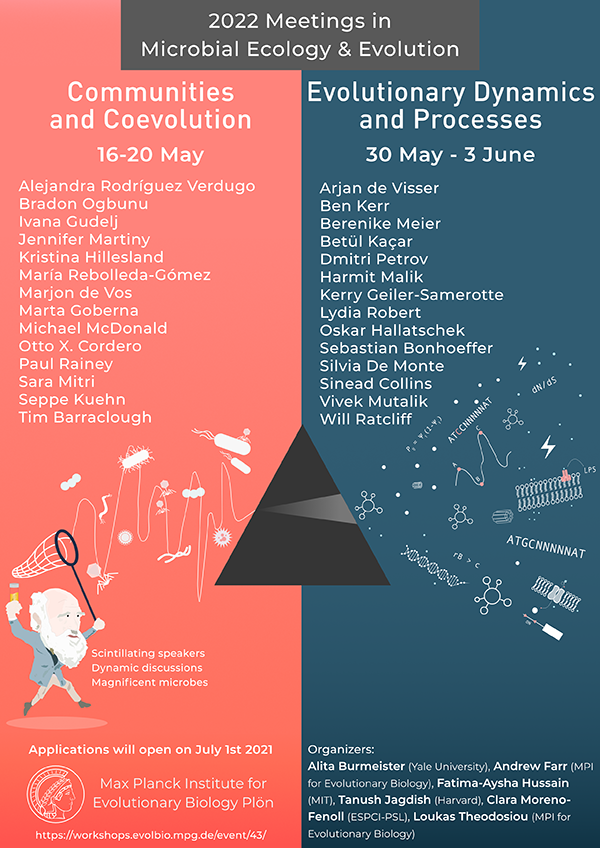Speaker
Description
A longstanding question in Ecology is which drivers are responsible for the difference in abundance of species within a community. While some species are relatively abundant, many others are rare. Theoretical models have been useful to investigate the drivers of community dynamics. In particular, models that consider the death, birth, and immigration of individuals have been used extensively. For example, models, where the rates are assumed neutral have shown that stochasticity alone can have a strong influence. Understanding the effect of differential adaptation (via growth and death rate differences) has been more challenging. Recently, we have overcome some of these difficulties to study the effect of differential adaptation to the environment in large and diverse communities. For this, we have relied on simulations and analytic tools to compute the distribution of abundances. Then, for each microbial type, we have estimated quantities such as the occurrence frequency and the mean and variance of the abundance. We have looked into the occurrence-abundance pattern often reported in host-associated microbiomes and, more generally, microbial communities. Interestingly, we observe that large immigration and biodiversity -- common in microbial communities -- lead to such patterns, regardless of whether the microbes are neutrally or differentially adapted. This theoretical result has important implications for interpreting and testing empirical data at the community and population levels.

